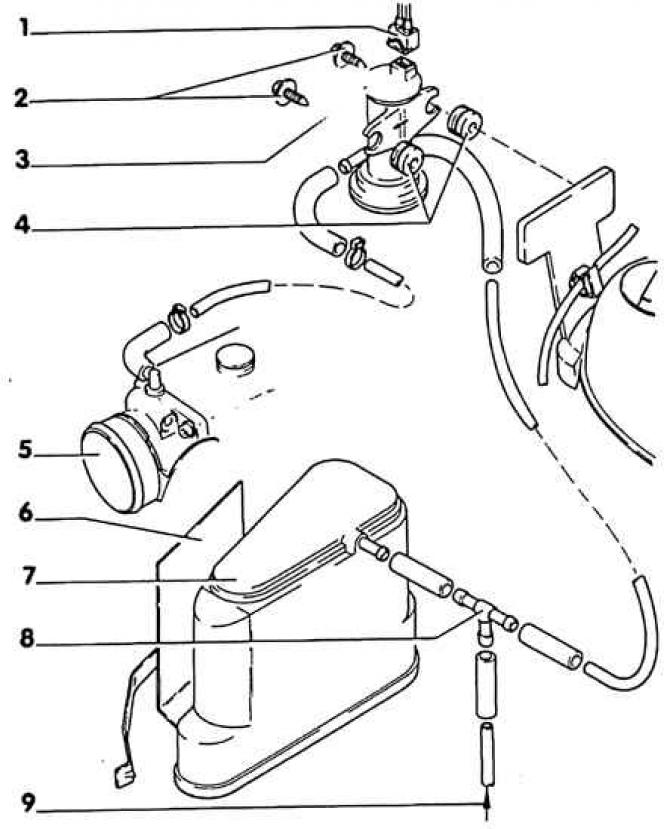Activated carbon system

1. Connecting plug; 2. Bolts, 10 Nm; 3. Magnetic valve. Synchronized. Pay attention to the installation position. The arrow indicates the direction of the current; 4. Rubber bushing 5. Throttle pipe; 6. Bracket; 7. Tank with activated carbon. Location: wheel well front left; 8. Branch; 9. Air outlet pipe
As a result of temperature changes, fuel vapors can be generated in the fuel tank, which, in conventional ventilation and air venting systems from the fuel tank, enter the atmosphere.
In order to avoid the emission of fuel vapors, an activated carbon system is installed.
When the engine is stopped and running, fuel vapors, due to the heating of gasoline, enter the activated carbon tank through the hose connection and accumulate there. The activated charcoal tank is located under the left fender in the wheel well.
While driving, the outside air that is sucked in by the engine is vented to the activated charcoal tank. Fresh air picks up fuel particles settled on activated carbon and delivers them through the ventilation duct to the combustion chamber of the engine.
The ventilation duct contains a solenoid valve that regulates the amount of ventilation air. The valve is controlled by the fuel injection system control unit. In this case, the control device performs smooth operation of the valve, depending on the speed, load and operation of the lambda probe. At full load, the valve is fully open. If the current supply stops, the valve is also completely closed.
Connect ground cable (-) to the battery. Enter the anti-theft code, program the radio stations and set the exact time.
Attention! Connect the battery only with the ignition off, otherwise the fuel injection system control unit will fail.

Visitor comments